Thesis Chapters by Michael Elwardany
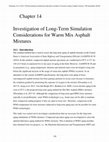
Ph.D. Dissertation - Chapter 14, 2017
The standard method that is used to assess the long-term aging of asphalt mixtures in the United ... more The standard method that is used to assess the long-term aging of asphalt mixtures in the United States is American Association of State Highway and Transportation Officials (AASHTO) R 30 (2010). In this method, compacted asphalt mixture specimens are conditioned at 85°C ± 3°C for 120 ± 0.5 hours to represent five to ten years of aging in the field. However, AASHTO R 30 and its parameters (e.g., aging temperature, duration and material state) were developed a long time before the significant increase in the usage of warm mix asphalt (WMA) occurred. As an alternative to the current AASHTO specifications, the long-term oven aging of loose (uncompacted) asphalt mixture has been gaining attention in recent years because it eliminates the oxidation gradient by promoting the exposure of oxygen to the mixture (Elwardany et al. 2017-b, Arega et al. 2013, Van den Bergh 2011, Braham et al. 2009). Loose mixture aging in the oven at 95°C is the proposed long-term aging method for Hot Mix Asphalt (HMA) mixtures (Elwardany et al. 2017-b). Although the compaction of long-term aged HMA loose mixtures typically is not problematic, some WMA technologies (e.g., foam) may not be able to maintain their compaction-aiding property if they are aged as loose mix. Therefore, compaction at the WMA temperature for loose mixtures subjected to long-term aging may not be possible for some WMA technologies.
This study was carried out to investigate considerations that are necessary for the long-term aging simulations of WMA mixtures. Compacted specimen aging was investigated to select the optimal laboratory aging method for WMA mixtures. This evaluation of WMA aging includes data obtained from two projects, i.e., the Manitoba Infrastructure and Transportation (MIT) and National Center for Asphalt Technology (NCAT).
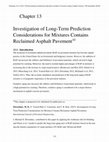
Ph.D. Dissertation - Chapter 13, 2017
The inclusion of reclaimed asphalt pavement (RAP) in pavement mixtures has become regular practic... more The inclusion of reclaimed asphalt pavement (RAP) in pavement mixtures has become regular practice in the United States for environmental and budgetary reasons. However, the addition of RAP can increase the stiffness and brittleness of pavement materials, which can lead to high potential for cracking. Moreover, the need to include higher percentages of RAP in mixtures is increasing due to the increase in virgin material prices (Keshavarzi and Kim 2016, Daniel et al. 2015, Mensching et al. 2014, Yousefi Rad et al. 2014, Elwardany 2012, McDaniel et al. 2012, Tarbox 2011). Thus, the accurate simulation and prediction of the long-term aging of RAP mixtures is of pragmatic importance to the pavement industry.
Oxidative aging also increases the stiffness and brittleness of pavement materials, which leads to a high potential for cracking. Therefore, oxidative aging is considered to be a major distress mechanism in asphalt concrete pavements.
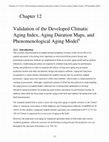
Ph.D. Dissertation - Chapter 12, 2017
The accurate characterization of asphalt mixture properties in terms of the service life of an as... more The accurate characterization of asphalt mixture properties in terms of the service life of an asphalt pavement is becoming more important as more powerful pavement design and performance prediction methods are implemented. Both an accurate aging model and an optimal laboratory conditioning procedure are required to simulate long-term aging for performance testing and prediction in order to integrate the effects of long-term aging into pavement prediction models and other mechanistic design and analysis methods. Aging has long been recognized as a major distress mechanism for asphalt concrete and, by extension, asphalt pavements. Aging causes the material to stiffen and embrittle, which leads to a high potential for cracking in pavements. Although a significant amount of effort has been placed on understanding the aging process of asphalt binder, relatively less work has been undertaken to develop laboratory aging procedures for producing aged mixture specimens for performance testing. In addition, little effort has been made to predict aging in the field and calibrate the predictions with field measurements. The standard method that is used to assess the long-term aging of asphalt mixtures in the United States is American Association of State Highway and Transportation Officials (AASHTO) R 30 (2010). In this method, compacted asphalt mixture specimens are conditioned at 85°C ± 3°C for 120 ± 0.5 hours to represent five to ten years of aging in the field. However, the long-term oven aging of compacted specimens leads to both radial and vertical oxidation gradients, which are concerns for performance testing because the properties can vary throughout the specimen (Elwardany et al. 2017-b). Elwardany, M. D. (2017). Phenomenological modeling and laboratory simulation of long-term aging of asphalt mixtures-PhD dissertation (NCSU)
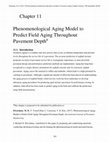
Ph.D. Dissertation - Chapter 11, 2017
Oxidative aging is a complex and slow process that occurs at ambient temperature and pressure lev... more Oxidative aging is a complex and slow process that occurs at ambient temperature and pressure levels throughout the service life of a pavement. The accurate prediction of asphalt mixture properties in terms of pavement service life is of pragmatic importance as more powerful pavement design and performance prediction methods are implemented. Aging has long been recognized as a major distress mechanism for asphalt concrete and, by extension, asphalt pavements. Aging causes the material to stiffen and embrittle, which leads to a high potential for cracking in pavements. Although a significant amount of effort has been placed on understanding the aging process of asphalt binder, relatively less work has been undertaken to develop laboratory aging procedures for producing aged mixture specimens for performance testing. In addition, little effort has been made to predict aging in the field and calibrate the predictions using field measurements.
The phenomenological model developed in this study can be used as a basis for improving the prediction of changes in asphalt binder properties with oxidative aging within pavement performance prediction frameworks, including Pavement ME Design and FlexPAVE. Chapter 9 presents a kinetics model to predict the long-term aging rates of oven-aged loose mixtures. In order to evaluate the ability of the phenomenological model to predict the evolution of oxidative aging in pavements, the developed kinetics model was applied to hourly pavement temperature history data of fifteen different field sections at various depths.
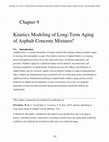
Ph.D. Dissertation - Chapter 9, 2017
Asphalt binder is a natural end product of organic material that undergo chemical oxidative aging... more Asphalt binder is a natural end product of organic material that undergo chemical oxidative aging by reacting with atmospheric oxygen. The oxidative reaction of asphalt binders is an ongoing process throughout pavement service life which takes place at ambient temperatures and pressures. Oxidative aging has a significant impact on the chemical, microstructural, and rheological properties of asphalt binder. Oxidation increases the stiffness and brittleness of asphalt binders and, by extension, asphalt concrete mixtures leading to a high cracking potential. Thus, oxidative age hardening has been considered to be one of the major distress mechanisms in asphalt pavements. Fundamental modeling of asphalt binder oxidative aging and the accurate prediction of asphalt mixture properties in terms of pavement service life is of pragmatic importance as more powerful pavement design and performance prediction methods are implemented.
All asphalt materials exhibit relatively similar kinetics consisting of an initial fast reaction period, also known as spurt, followed by a slower reaction period that has an approximately constant rate (Petersen et al. 1996, Petersen 1998, Petersen et al. 2011, Prapaitrakul 2009, Han 2011). These two reaction periods are known to be made up of fundamentally different chemical reactions (Petersen 1998). Petersen et al. (1996) explains that during the spurt, sulfoxides are the major oxidation product and cause an increase in viscosity. During the slower reaction period, ketones are the major product and the cause of the increase in viscosity.
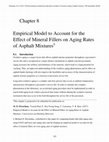
Ph.D. Dissertation - Chapter 8, 2017
Oxidative aging is a major factor that affects asphalt mixture properties throughout a pavement's... more Oxidative aging is a major factor that affects asphalt mixture properties throughout a pavement's service life and is recognized as a major distress mechanism in asphalt concrete pavements. Aging increases the stiffness and brittleness of the material, which leads to a high potential for cracking. Thus, an improved understanding of the oxidative aging phenomenon and its effect on asphalt binder rheology will also improve the feasibility and accuracy of the characterization of asphalt mixture properties as a function of pavement service life. Long-term oxidative aging is a complex and slow process that occurs at ambient temperatures and pressures throughout a pavement's service life. In order to simulate this complex phenomenon in the laboratory, an accelerated aging procedure must be implemented in order to match field aging levels within a practical time frame without altering the oxidative reaction mechanism that may occur in the field throughout the service life of the pavement. 5 This chapter is proposed to be submitted for publication as: Empirical Model to Account for the Effect of Mineral Fillers on Aging Rates of Asphalt Mixtures. Construction and Building Materials. I, Michael D. Elwardany, contributed to this paper by comparing binder thin-film aging rates using USAT and loose mix aging rates and developing an empirical model to account for the effect of mineral fillers on oven aging rates of asphalt mixtures. Elwardany, M. D. (2017). Phenomenological modeling and laboratory simulation of long-term aging of asphalt mixtures-PhD dissertation (NCSU)
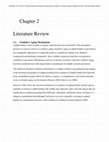
Ph.D. Dissertation Chapter 2 - Literature Review, 2017
Asphalt binder consists mainly of organic materials that react chemically with atmospheric pressu... more Asphalt binder consists mainly of organic materials that react chemically with atmospheric pressure in a process known as oxidative aging. Oxidative aging of asphalt binders in pavements has a pragmatic importance as it generally leads to a significant change in its chemical composition and rheological properties. Since oxidative aging has long been recognized to contribute to pavement embrittlement and loss of fracture resistance, therefore oxidative aging has been considered one of the major distress mechanisms for asphalt concrete pavements.
The chemical and physicochemical mechanisms of asphalt oxidative age hardening and changes in the rheological properties of asphalt resulting from oxidation of asphalt binder have been the focus of plentiful research efforts for almost a century. A comprehensive and critical literature review on binder aging can be found in (Petersen 2009, Glover et al. 2008).
Petersen (1984) shows the reaction mechanisms of oxidation of asphalt binders and the species naturally occurring in asphalt binders like sulfide and carboxylic acid versus the species that are formed due to oxidation presented like Sulfoxide, Anhydride, and Ketone, taking in consideration that although Carboxylic acid can is naturally occurring in asphalt binders its concentration increases with evolution of oxidation reaction (Petersen 2009).
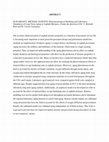
Ph.D. Dissertation NCSU, 2017
The accurate characterization of asphalt mixture properties as a function of pavement service lif... more The accurate characterization of asphalt mixture properties as a function of pavement service life is becoming more important as more powerful pavement design and performance prediction methods are implemented. Oxidative aging is a major distress mechanism of asphalt pavements. Aging increases the stiffness and brittleness of the material, which leads to a high cracking potential. Thus, an improved understanding of the aging phenomenon and its effect on asphalt binder chemical and rheological properties will allow for the prediction of mixture properties as a function of pavement service life. Many researchers have conducted laboratory binder thin-film aging studies; however, this approach does not allow for studying the physicochemical effects of mineral fillers on age hardening rates in asphalt mixtures. Moreover, aging phenomenon in the field is governed by kinetics of binder oxidation, oxygen diffusion through mastic phase, and oxygen percolation throughout the air voids structure. In this study, laboratory aging trials were conducted on mixtures prepared using component materials of several field projects throughout the USA and Canada. Laboratory aged materials were compared against field cores sampled at different ages. Results suggested that oven aging of loose mixture at 95°C is the most promising laboratory long-term aging method. Additionally, an empirical model was developed in order to account for the effect of mineral fillers on age hardening rates in asphalt mixtures. Kinetics modeling was used to predict field aging levels throughout pavement thickness and to determine the required laboratory aging duration to match field aging. Kinetics model outputs are calibrated using measured data from the field to account for the effects of oxygen diffusion and percolation. Finally, the calibrated model was validated using independent set of field sections. This work is expected to provide basis for improved asphalt mixture and pavement design procedures in order to save taxpayers' money.
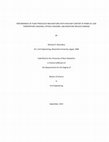
The Use of Reclaimed Asphalt Pavement (RAP) in Hot Mix Asphalt Mixtures has become a regular prac... more The Use of Reclaimed Asphalt Pavement (RAP) in Hot Mix Asphalt Mixtures has become a regular practice in the United States since the mid to late 1970s. Nowadays, many State DOTs and contractors are very comfortable using RAP contents up to 20%. As the cost of virgin materials continues to rise and the society becoming more aware of Environmental Sustainability Issues, the need to include higher percentages of RAP in mixtures is also increasing.
Generally aged RAP binder will blend to some extent with the virgin binder leading to stiffer mixtures; however the amount of stiffening may be negligible at low RAP contents. High amount of RAP may significantly increase mixture stiffness and lead to low cracking resistance in cold regions. That is why, concerns about Low temperature Cracking, Fatigue cracking and the potential need to bump binder grades limit the amounts of HMA mixtures that is produced with high RAP content (greater than 25%) in the northeast US. Moisture Induced Damage is an issue in some regions as well.
As a part of Transportation Pooled Fund Project TPF-5(230) “Evaluation of Plant-Produced High-Percentage RAP Mixtures in the Northeast”, the objective of this study is to compare the laboratory performance of plant produced HMA mixtures containing high amount of RAP (30, 40% RAP) to the performance of regular RAP content mixtures (20% RAP) and virgin mixtures. The mixture testing includes Low Temperature Creep and Strength in Indirect Tension (IDT) mode following (AASHTO, T322-03), Push-Pull Direct Tension Cyclic Fatigue Testing following proposed test method under review developed by North Carolina State University (NCSU), and Moisture Induced Damage Tensile Strength Ratio under IDT mode following (AASHTO, T283-03).
Analysis of Low Temperature Cracking will be based on a mechanistic-based prediction model for thermal cracking of asphalt concrete pavements developed by Hiltunen and Roque. Fatigue cracking analysis will be performed using the Simplified-Viscoelastic Continuum Damage (S-VECD) Model developed by Underwood and Kim. Mixtures Used in this study are from three states in the northeast US (New Hampshire, New York, and Vermont).
Papers by Michael Elwardany

Transportation Research Record: Journal of the Transportation Research Board, 2020
This paper refines the oxidation kinetics-based approach originally proposed in the NCHRP 09-54 p... more This paper refines the oxidation kinetics-based approach originally proposed in the NCHRP 09-54 project to determine the laboratory aging durations at 95°C that best reflect the effects of time, climate, and depth on loose asphalt mixtures. Aging durations that match the field aging at various pavement depths were determined in this study for asphalt mixtures, including warm-mix asphalt (WMA), polymer-modified asphalt (PMA), and reclaimed asphalt pavement (RAP). Here, the laboratory aging durations were used to calibrate a climatic aging index to prescribe the laboratory aging duration, given hourly pavement temperature history obtained from Enhanced Integrated Climatic Model analysis of the Modern Era Retrospective-Analysis for Research and Applications, Version 2 weather data. The recalibrated procedure determines the required laboratory aging durations with reasonable accuracy for virgin hot-mix asphalt (HMA) and WMA mixtures. From the recalibrated results, no variations were fou...
Road Materials and Pavement Design, 2022

The accurate characterization of asphalt mixture properties as a function of pavement service lif... more The accurate characterization of asphalt mixture properties as a function of pavement service life is becoming more important as more powerful pavement design and performance prediction methods are implemented. Oxidative aging is a major distress mechanism of asphalt pavements. Aging increases the stiffness and brittleness of the material, which leads to a high cracking potential. Thus, an improved understanding of the aging phenomenon and its effect on asphalt binder chemical and rheological properties will allow for the prediction of mixture properties as a function of pavement service life. Many researchers have conducted laboratory binder thin-film aging studies; however, this approach does not allow for studying the physicochemical effects of mineral fillers on age hardening rates in asphalt mixtures. Moreover, aging phenomenon in the field is governed by kinetics of binder oxidation, oxygen diffusion through mastic phase, and oxygen percolation throughout the air voids structure. In this study, laboratory aging trials were conducted on mixtures prepared using component materials of several field projects throughout the USA and Canada. Laboratory aged materials were compared against field cores sampled at different ages. Results suggested that oven aging of loose mixture at 95°C is the most promising laboratory long-term aging method. Additionally, an empirical model was developed in order to account for the effect of mineral fillers on age hardening rates in asphalt mixtures. Kinetics modeling was used to predict field aging levels throughout pavement thickness and to determine the required laboratory aging duration to match field aging. Kinetics model outputs are calibrated using measured data from the field to account for the effects of oxygen diffusion and percolation. Finally, the calibrated model was validated using independent set of field sections. This work is expected to provide basis for improved asphalt mixture and pavement design procedures in order to save taxpayers' money.

In the wake of a growing bitumen binder variability resulting from economic and geopolitical cons... more In the wake of a growing bitumen binder variability resulting from economic and geopolitical constraints leading to changes in crude oils and refining processes, the asphalt industry is facing challenges of quality, consistency and early pavement failures in the form of cracking and raveling in particular. New, innovative and relevant analytical tools and approaches are being developed particularly at the Western Research Institute (WRI) to address the challenges and advance from trials and errors to modelling and predictions. Studies launched by WRI have demonstrated the proof of concept, and the validation of chemometric correlations; linking chemical composition of bitumen binders to their physical properties and their performance in mixes. Relevant strong correlations were obtained for compositional fractions, chemical functionalities, and thermal parameters with binder rheological properties, specification parameters, as well as asphalt mix properties, through a study with a road contractor. Hence, the binder impacts mixture stiffness and fatigue resistance, but less prominently in mixture resistance to moisture-induced damaged, rutting resistance and compaction properties, where aggregates become more prominent. Other important results confirmed some performance indicators from binder to mixes, such as the stiffness modulus, fatigue parameters, thermal cracking parameters (relaxation and cracking temperature), and rutting resistance. New possible indicators were detected like the binder glass transition and crossover temperatures as well as their difference, named temperature of intermediate region (TIR) with respect to cracking resistance and healing propensity. The effect of long term aging, particularly with respect to cracking, was also evaluated. Many of these results have been obtained through two major projects: the Asphalt Industry Research Consortium launched by WRI which is ongoing on a very wide binder range aiming to chemically fingerprint binders to predict their mechanical properties as well as their aging susceptibility and their compatibility with various modifiers or recycled materials. The second project is the ongoing National Cooperative Highway Research Program 09-60 project. This involves studying the impact of binder resistance to internal restraint damage mechanism on mixture cracking, and the influence of other thermal cracking factors such as, long-term aging and reversible time-dependent physical hardening. The ultimate goal of this project is to develop and propose new and more relevant specification parameters to avoid age-induced surface damage in the form of transverse cracking, block cracking, and raveling.

Transportation Research Record: Journal of the Transportation Research Board, 2022
Superpave specifications address binder properties that may lead to rutting, transverse cracking,... more Superpave specifications address binder properties that may lead to rutting, transverse cracking, and fatigue damage with varying degrees of success. However, asphalt binder production and formulation has significantly changed and introduced much more variability in relation to quality since the development of the Superpave Performance-Grade system because of economic, technical, and environmental reasons. Consequently, aged-induced surface distresses under combined thermal and traffic loading have become the main challenge for highway agencies. Thermally induced surface deterioration appears in the form of traditional transverse cracking, block cracking, and raveling, or accelerating damage at construction joints. This study evaluated the limitations of the proposed linear viscoelastic (LVE) rheological cracking surrogates, such as ΔTc, R-value, and G-R parameters, and the ability of the Asphalt Binder Cracking Device (ABCD) failure test to overcome these limitations. ABCD is parti...
xviii Chapter 1: Introduction 1 Chapter 2 : Materials and Methods 5 2.1 Materials 5 2.2 Specimen ... more xviii Chapter 1: Introduction 1 Chapter 2 : Materials and Methods 5 2.1 Materials 5 2.2 Specimen Fabrication 12 2.2.1 Loose Mixture Reheating Protocol 12 2.2.2 IDT Test Specimen Fabrication 14 2.2.3 Fatigue Test Specimen Fabrication 26 2.3 Testing and Analysis Methods 31 2.3.1 Binder Testing and Analysis Methods 31 2.3.2 Mixture Testing and Analysis Methods 32 Chapter 3 : Results and Discussion 56 3.1 Binder Testing Results 56 3.2 Mixture Testing Results 58 3.2.1 Low Temperature Creep Compliance 58 3.2.2 Low Temperature Strength Testing Results 74 3.2.3 TCMODEL Results 81

RILEM Bookseries, 2018
Chemo-mechanical analysis tools were used to provide plausible reasons behind different binder pr... more Chemo-mechanical analysis tools were used to provide plausible reasons behind different binder properties that are not well captured by the conventional Superpave PG-grading system. In this study, six binders were divided in two groups based on their continuous PG-grades. The binder matrix includes: two SBS modified binders, one air blown bitumen, one bitumen with high wax content and two other unique binder blends. Although the binders in each group have the same continuous PG-grades based on AASHTO M320, they exhibit very different low-temperature performance based on the binder relaxation ΔTc index, and they have different upper PG performance according to MSCR testing and AASHTO MP19, which takes into account both traffic load and climate conditions. Based on the results, high apparent molecular weight waxes appear to lead to poor low-temperature cracking and lower molecular weight waxes lead to poor rutting performance. Meanwhile incompatible polymer modification seems to lead to poor rutting and cracking performance relative to unmodified binders or even air blown binder.











Uploads
Thesis Chapters by Michael Elwardany
This study was carried out to investigate considerations that are necessary for the long-term aging simulations of WMA mixtures. Compacted specimen aging was investigated to select the optimal laboratory aging method for WMA mixtures. This evaluation of WMA aging includes data obtained from two projects, i.e., the Manitoba Infrastructure and Transportation (MIT) and National Center for Asphalt Technology (NCAT).
Oxidative aging also increases the stiffness and brittleness of pavement materials, which leads to a high potential for cracking. Therefore, oxidative aging is considered to be a major distress mechanism in asphalt concrete pavements.
The phenomenological model developed in this study can be used as a basis for improving the prediction of changes in asphalt binder properties with oxidative aging within pavement performance prediction frameworks, including Pavement ME Design and FlexPAVE. Chapter 9 presents a kinetics model to predict the long-term aging rates of oven-aged loose mixtures. In order to evaluate the ability of the phenomenological model to predict the evolution of oxidative aging in pavements, the developed kinetics model was applied to hourly pavement temperature history data of fifteen different field sections at various depths.
All asphalt materials exhibit relatively similar kinetics consisting of an initial fast reaction period, also known as spurt, followed by a slower reaction period that has an approximately constant rate (Petersen et al. 1996, Petersen 1998, Petersen et al. 2011, Prapaitrakul 2009, Han 2011). These two reaction periods are known to be made up of fundamentally different chemical reactions (Petersen 1998). Petersen et al. (1996) explains that during the spurt, sulfoxides are the major oxidation product and cause an increase in viscosity. During the slower reaction period, ketones are the major product and the cause of the increase in viscosity.
The chemical and physicochemical mechanisms of asphalt oxidative age hardening and changes in the rheological properties of asphalt resulting from oxidation of asphalt binder have been the focus of plentiful research efforts for almost a century. A comprehensive and critical literature review on binder aging can be found in (Petersen 2009, Glover et al. 2008).
Petersen (1984) shows the reaction mechanisms of oxidation of asphalt binders and the species naturally occurring in asphalt binders like sulfide and carboxylic acid versus the species that are formed due to oxidation presented like Sulfoxide, Anhydride, and Ketone, taking in consideration that although Carboxylic acid can is naturally occurring in asphalt binders its concentration increases with evolution of oxidation reaction (Petersen 2009).
Generally aged RAP binder will blend to some extent with the virgin binder leading to stiffer mixtures; however the amount of stiffening may be negligible at low RAP contents. High amount of RAP may significantly increase mixture stiffness and lead to low cracking resistance in cold regions. That is why, concerns about Low temperature Cracking, Fatigue cracking and the potential need to bump binder grades limit the amounts of HMA mixtures that is produced with high RAP content (greater than 25%) in the northeast US. Moisture Induced Damage is an issue in some regions as well.
As a part of Transportation Pooled Fund Project TPF-5(230) “Evaluation of Plant-Produced High-Percentage RAP Mixtures in the Northeast”, the objective of this study is to compare the laboratory performance of plant produced HMA mixtures containing high amount of RAP (30, 40% RAP) to the performance of regular RAP content mixtures (20% RAP) and virgin mixtures. The mixture testing includes Low Temperature Creep and Strength in Indirect Tension (IDT) mode following (AASHTO, T322-03), Push-Pull Direct Tension Cyclic Fatigue Testing following proposed test method under review developed by North Carolina State University (NCSU), and Moisture Induced Damage Tensile Strength Ratio under IDT mode following (AASHTO, T283-03).
Analysis of Low Temperature Cracking will be based on a mechanistic-based prediction model for thermal cracking of asphalt concrete pavements developed by Hiltunen and Roque. Fatigue cracking analysis will be performed using the Simplified-Viscoelastic Continuum Damage (S-VECD) Model developed by Underwood and Kim. Mixtures Used in this study are from three states in the northeast US (New Hampshire, New York, and Vermont).
Papers by Michael Elwardany
This study was carried out to investigate considerations that are necessary for the long-term aging simulations of WMA mixtures. Compacted specimen aging was investigated to select the optimal laboratory aging method for WMA mixtures. This evaluation of WMA aging includes data obtained from two projects, i.e., the Manitoba Infrastructure and Transportation (MIT) and National Center for Asphalt Technology (NCAT).
Oxidative aging also increases the stiffness and brittleness of pavement materials, which leads to a high potential for cracking. Therefore, oxidative aging is considered to be a major distress mechanism in asphalt concrete pavements.
The phenomenological model developed in this study can be used as a basis for improving the prediction of changes in asphalt binder properties with oxidative aging within pavement performance prediction frameworks, including Pavement ME Design and FlexPAVE. Chapter 9 presents a kinetics model to predict the long-term aging rates of oven-aged loose mixtures. In order to evaluate the ability of the phenomenological model to predict the evolution of oxidative aging in pavements, the developed kinetics model was applied to hourly pavement temperature history data of fifteen different field sections at various depths.
All asphalt materials exhibit relatively similar kinetics consisting of an initial fast reaction period, also known as spurt, followed by a slower reaction period that has an approximately constant rate (Petersen et al. 1996, Petersen 1998, Petersen et al. 2011, Prapaitrakul 2009, Han 2011). These two reaction periods are known to be made up of fundamentally different chemical reactions (Petersen 1998). Petersen et al. (1996) explains that during the spurt, sulfoxides are the major oxidation product and cause an increase in viscosity. During the slower reaction period, ketones are the major product and the cause of the increase in viscosity.
The chemical and physicochemical mechanisms of asphalt oxidative age hardening and changes in the rheological properties of asphalt resulting from oxidation of asphalt binder have been the focus of plentiful research efforts for almost a century. A comprehensive and critical literature review on binder aging can be found in (Petersen 2009, Glover et al. 2008).
Petersen (1984) shows the reaction mechanisms of oxidation of asphalt binders and the species naturally occurring in asphalt binders like sulfide and carboxylic acid versus the species that are formed due to oxidation presented like Sulfoxide, Anhydride, and Ketone, taking in consideration that although Carboxylic acid can is naturally occurring in asphalt binders its concentration increases with evolution of oxidation reaction (Petersen 2009).
Generally aged RAP binder will blend to some extent with the virgin binder leading to stiffer mixtures; however the amount of stiffening may be negligible at low RAP contents. High amount of RAP may significantly increase mixture stiffness and lead to low cracking resistance in cold regions. That is why, concerns about Low temperature Cracking, Fatigue cracking and the potential need to bump binder grades limit the amounts of HMA mixtures that is produced with high RAP content (greater than 25%) in the northeast US. Moisture Induced Damage is an issue in some regions as well.
As a part of Transportation Pooled Fund Project TPF-5(230) “Evaluation of Plant-Produced High-Percentage RAP Mixtures in the Northeast”, the objective of this study is to compare the laboratory performance of plant produced HMA mixtures containing high amount of RAP (30, 40% RAP) to the performance of regular RAP content mixtures (20% RAP) and virgin mixtures. The mixture testing includes Low Temperature Creep and Strength in Indirect Tension (IDT) mode following (AASHTO, T322-03), Push-Pull Direct Tension Cyclic Fatigue Testing following proposed test method under review developed by North Carolina State University (NCSU), and Moisture Induced Damage Tensile Strength Ratio under IDT mode following (AASHTO, T283-03).
Analysis of Low Temperature Cracking will be based on a mechanistic-based prediction model for thermal cracking of asphalt concrete pavements developed by Hiltunen and Roque. Fatigue cracking analysis will be performed using the Simplified-Viscoelastic Continuum Damage (S-VECD) Model developed by Underwood and Kim. Mixtures Used in this study are from three states in the northeast US (New Hampshire, New York, and Vermont).